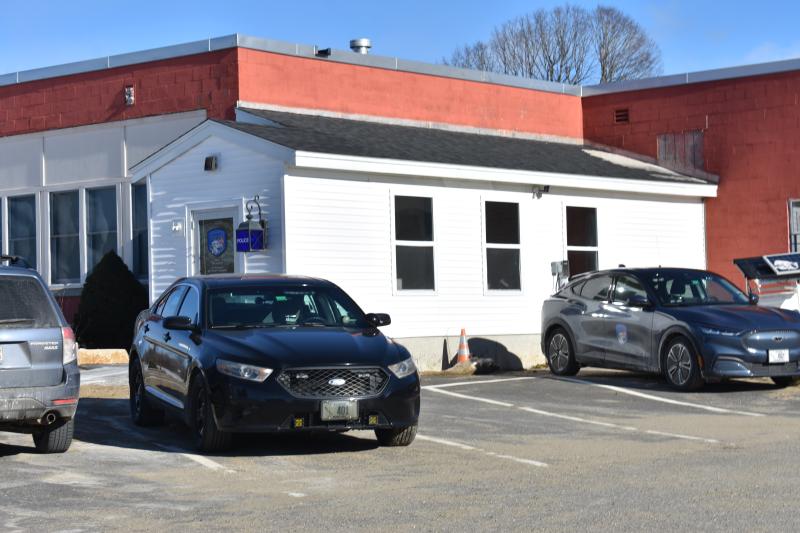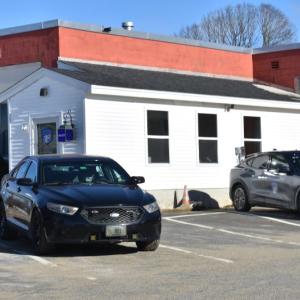Police commission raises eyebrows at Thomaston PD, applauds creativity, community engagement
THOMASTON — Thomaston Police Department is an eye raiser for members of the Maine Chiefs of Police Association. Three chiefs from the association have been assessing the Thomaston PD for about three weeks now. Having done these assessments for other towns before, the chiefs came to the Midcoast expecting certain norms. Those norms were up-ended in this particular town of two districts.
The commission looks at evidence, policy, equipment, personnel, training, facility, pay scale, shift coverage. They were out on the street getting feedback from the public. They went to Walmart. They surveyed residents, municipal officials, and mutual aid law enforcement, looking at all aspects of what a progressive, professional police department should be doing.
The Town of Thomaston is using the final report to prep themselves and future Chief candidates for the position.
“We wanted to get this assessment done so that whoever is taking over as chief knows exactly what needs to be done, and [so that] we have a sense of exactly what they are signing up for ourselves,” said Select Board Chair Chris Rector.
During the Thomaston Public Safety workshop May 6, 2025, Brunswick Police Chief Scott Stewart said: “When I ask that question – ‘what do you think of your local police department’ – I’m always waiting for that 5 percent, upset that they got a ticket, or whatever. Not one. Not one person that I talked to had spoke anything bad about the police department. It’s something that the town and certainly the staff here right now should be very proud of.”
After seeing the two sides of Thomaston – the “business district,” which includes Walmart, a hotel, and restaurants, and then a long stretch before coming into the residential zone – the chiefs were surprised to learn that there’s only one, sometimes two, officers on duty at a time for the entire town. When is there opportunity to monitor speed in the residential? These chiefs know, from decades of experience, that the business district is extremely time consuming for police despite partnering with the business community and employing technology where possible to help investigate and curb crime. Law enforcement as a whole is extremely complicated, he said. There is incredible amount of liability applied to law enforcement in doing it right.
For instance, the Yellow Flag law ties an officer up for 7-8 hours.
“Seven to eight hours,” said Stewart. “You just lost your police department for 7-8 hours, just for one person. OUIs now, and drugs and alcohol, are four hours. You have to take them to the hospital. Each community is different, but law enforcement has changed. I’ve been doing this for 28 years and I can not get over how time consuming mental health calls are now...what would be three mental health calls a month for me in Falmouth are now three a day.”
Which leaves all three chiefs concerned about TPD’s novel 48-hour shift schedule, which allows six hours of sleep for each 24 hours. What happens if an incident occurs just prior to the end of the shift? When are those reports written, and how does the victim communicate further needs and memories to that officer? Mostly, though, the fear is that the day will come when a Thomaston officer is stuck awake for the full 48.
“The concern is fatigue,” said Stewart, “and fatigue is real.”
Yet, Thomaston officers spoke to the contrary during the meeting. In the two or so years doing this schedule, not one of them has been awake for more than 18 hours. There is always an officer in town, in uniform.
In a perfect world, TPD would have 7 officers plus the chief, said Sgt. Chris Hansen. With that perfect scenario, they would have two officers physically there, in town, 24/7, plus the chief. But, because the department is shorthanded again, down to six officers, with one on paternity leave, there might not always be an officer out on patrol. If the sole officer is down for his six hours of sleep, he’s down sleeping – until awakened by a call to respond.
Mutual aid law enforcement exists. But, it’s not reliable.
“If one of our officers is out by himself…,” said Hansen. “If he goes to a hot call, they’ll send somebody from Rockland, if they are available, somebody from the sheriff’s office, if they are available. The key is if they are available.”
Hansen and Jared Leonardi have been working together for TPD for six years now. There was a time when TPD only had two patrol officers and a chief. Hansen covered the day shift seven days a week. Leonardi covered the night shift seven nights a week. They lost weekends, holidays, families. For them, five days off, allowing them to go home to a new bond with families, and to actually put their uniforms away for a few days, is a wonderful thing. The new patrol officer who drives up from Arundel applied to TPD for solely that reason. Being twice divorced, not seeing his kids grow up, he retired from the force for two years. It was the 48-hours on, five days off that pulled him back into the fray.
Gardiner is doing 24 hours, then a few days off, then another 24 hours, according to Topsham Police Chief Marc Hagan.
“If I was a citizen here, one of my concerns would be follow ups,” said Hagan. “We have to do a lot of follow ups, and if you are only working Monday - Tuesday, then are off until the next Monday, it’s a concern for the citizens, if they have a lot of questions, or more information. Or a crash report. People want everything a lot faster nowadays because of electronics and so forth. “The officers seem to love it here, and it seems to be keeping a lot of officers here. So, if it’s working for you folks, that’s great.”
For his community, though, it wouldn’t work.
Some Thomaston residents who attended the meeting put forth praise for the officer who goes to the schools every morning, plays ball with students, listens to the staff. Others point to the daily Facebook posts for their greetings to the community; the cheerfulness goes along way for many folks.
Stewart pointed to the fact that when Hansen, Leonardi, and the officer from Arundel spoke during the meeting, they referred to themselves and each other by their first names.
“Which is typical of a town versus a city, where the officers are able to interact with the residents….That’s something to be proud of, they’re able to communicate with you and to interact with you on that level.”
General concerns were broached at the meeting. One resident didn’t like that she had to pick up the red phone at the station and talk to dispatch in an emergency. In questioning her complaint, she described a mock scenario of running from a stalker and going into the police station. Hansen reassured her that picking up the phone and talking to dispatch truly is the fastest way to get help.
Other residents asked about speed cameras like those at work zones in New York (not legal in Maine). A resident promoted the local sexual assault program, which Hansen said he references often. Others asked about regionalized law enforcement (Some police departments in Knox County are willing. Others flat out refuse).
Six years ago, Thomaston residents voted to keep their police department.
“We ask a lot from our police officers and we put a lot on them,” said Falmouth Police Chief John Kilbride. “We second guess everything they do, we strap cameras to them. We send them out there to a dangerous world. They have to make critical decisions in a half of a second. It’s extremely difficult, and there’s not a lot of people who want to do it.
“One of the first things we sense when we get here is, you love your police department, and you want to keep your police department.”
Watch the hour-long May 6, 2025 forum here: https://www.townhallstreams.com/stream.php?location_id=141&id=67137
Reach Sarah Thompson at news@penbaypilot.com


























